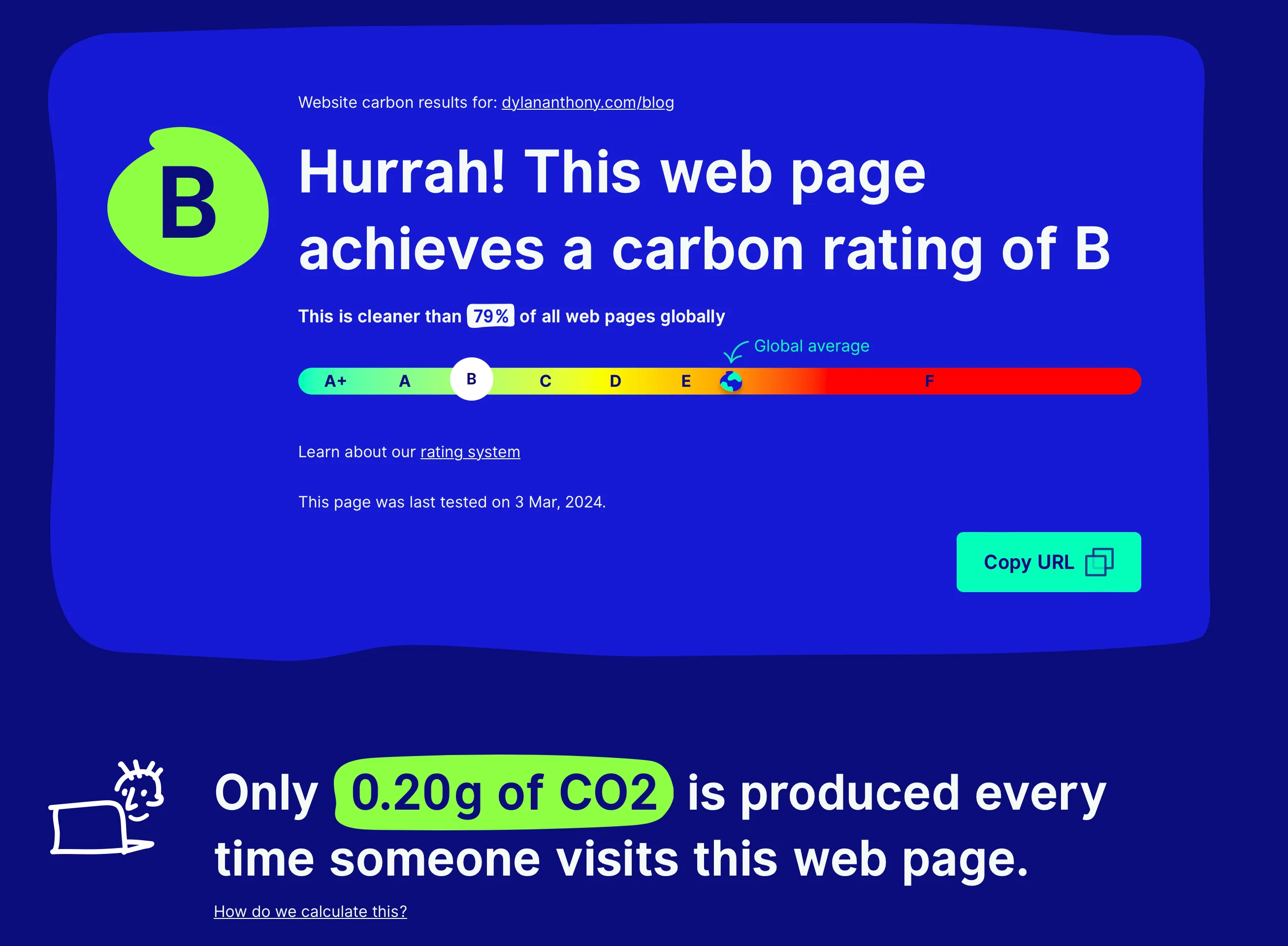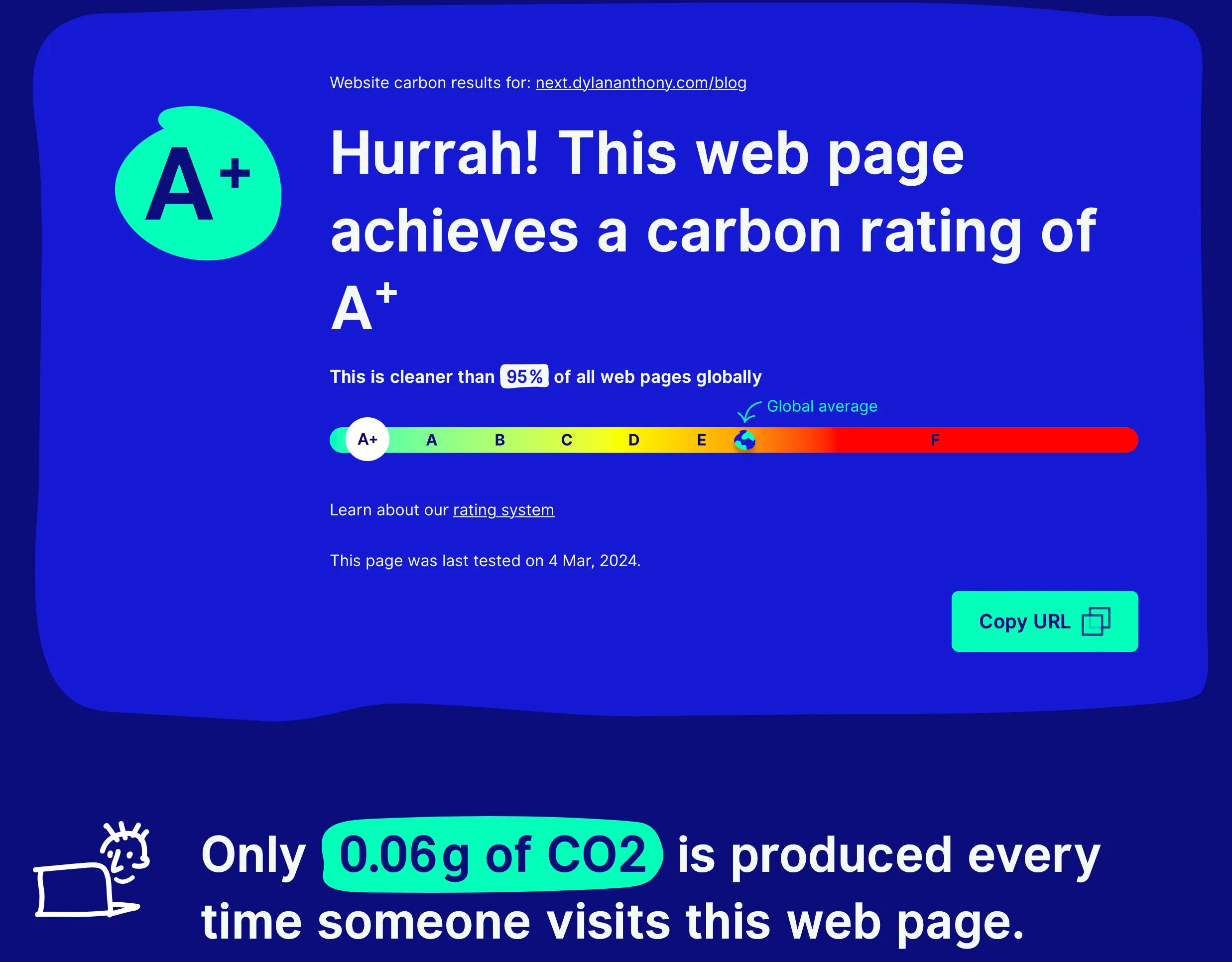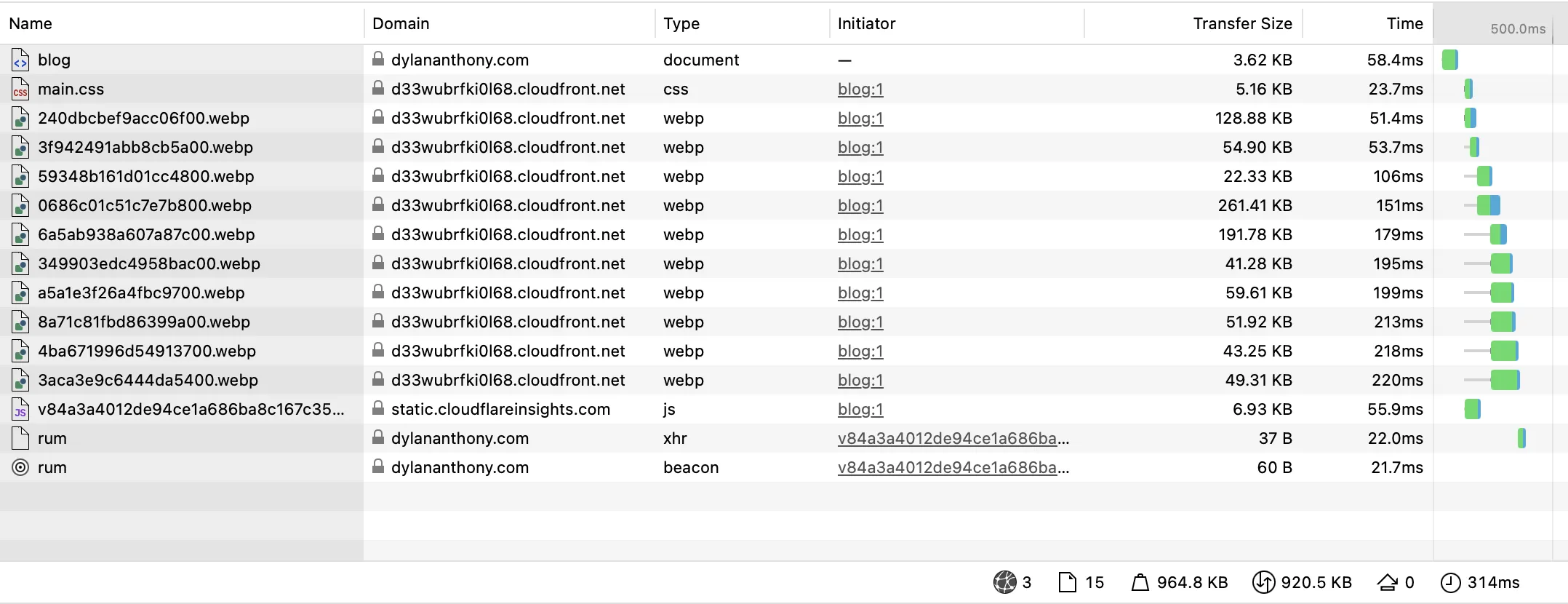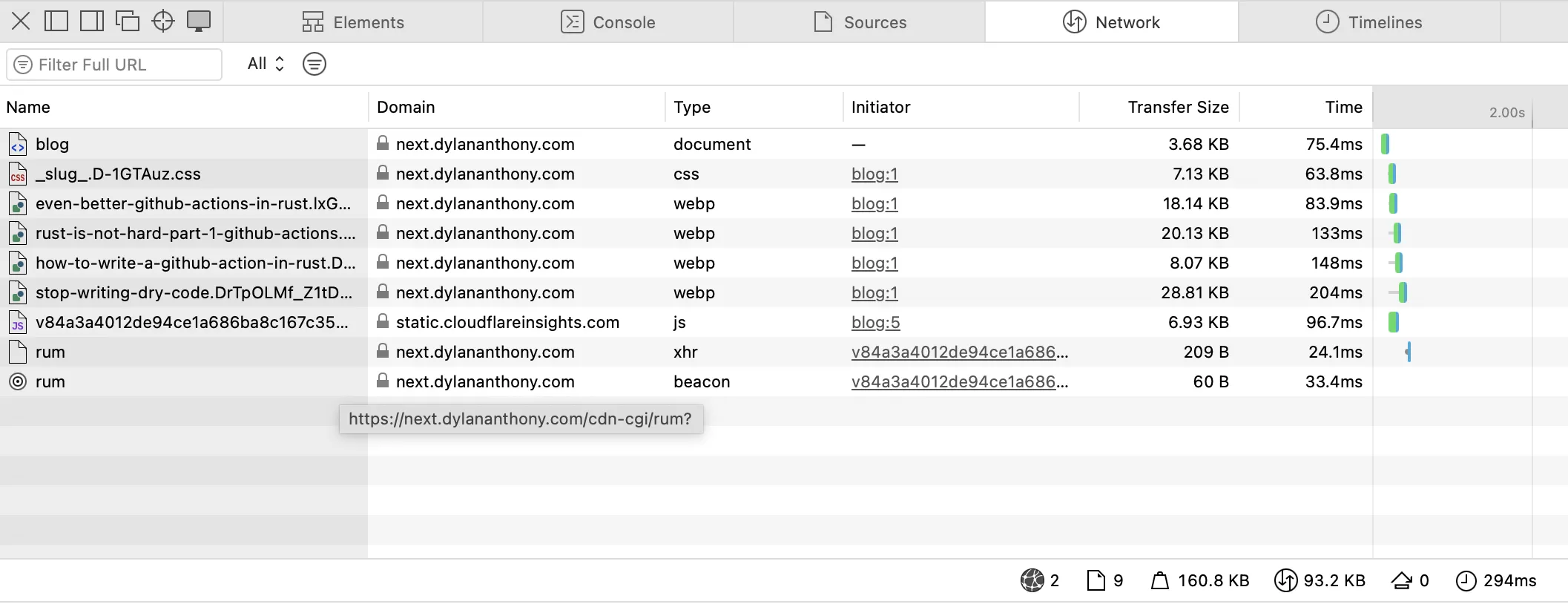Making my blog more climate-friendly with Astro

It’s been two years since I last rewrote my personal website, so naturally it’s time to do it again! The immediate motivation was simple: my website stopped building with an inscrutable error message. Rather than taking the time to learn more about Zola and what could be causing the issue, I figured I would switch to something with a bit more community support: Astro.
Why Astro?
I recently created a new documentation website for Knope using the incredible Starlight theme for Astro. The developer experience, community resources, and performance of the site were all so good that I knew I wanted to build more with Astro, so it was the natural choice for this rewrite.
But… climate-friendly?
Yes, climate-friendly! There’s this neat tool called Website Carbon that estimates the carbon emissions of a website. Here are the results for my old website:

A B is pretty good, better than 79% of other websites, apparently. But… “good” is never good enough for me, especially when it comes to climate change. So, how does the Astro version of my website compare? I used almost identical styles, markup, and content and I hosted it in exactly the same way. Here are the results:

A 70% reduction in carbon emissions! Now that’s something to be proud of. But… how? What is it about the Astro site that makes it better for the environment? Primarily, it’s reduced data transfer. Check it out, here’s the network view from my old site:

And here’s the network view from the Astro site:

On first load, the Astro site is 90% smaller than the Zola site! There are two reasons for this, first, Astro is lazy loading the images that are “below the fold”, so it doesn’t download data until it’s needed. Not only that, look what happens when we scroll all the way down and load everything (even more than the Zola site had loaded):

The Astro site is still 73% smaller than the Zola site! If we look a little closer, we can see why: every individual image is smaller. I’ll be honest, I don’t know what Astro is doing to make this possible, but to my eyes there’s no noticeable difference in quality, and that’s incredible!
What about clean energy?
My website is hosted on a combination of Netlify and Cloudflare, and both have strong commitments to sustainability. However, all the clean energy that is produced will be used, so even though my energy is coming from a sustainable source, using less of it will still reduce carbon emissions.
I like to think of it like the solar panels on my house. They produce electricity as long as the sun is up, and on most (non-cloudy) days, they produce more than we use. So what happens to the excess? It flows back into the grid and helps power my neighbors’ homes, replacing energy that may have come from fossil fuels otherwise. The energy I consume is not generating carbon emissions, but by consuming less I’m still reducing the overall emissions. It’s the same with my website, and yours! So, even if your site is powered by renewable sources, it’s still worth trying to reduce the energy consumption (by reducing data transfer).
How hard was it?
Like I said, I’m not a frontend developer, so changing up my website was very intimidating. Luckily, Astro makes things relatively easy. The Astro CLI gave me a blog template that worked great as a starting point. Next, I copied over my Markdown files and images. The only changes I had to make were to the frontmatter. For styling, my old site was using Tailwind, and there’s an Astro plugin for that (much easier than it was to add Tailwind to Zola). Really, the hardest part was figuring out how to translate the jinja-like templates of the old site into Astro components. To be honest, the toughest part of that was understanding the templates of the old site, since I found Astro’s syntax much easier to work with.
All-in-all, it took me a couple of afternoons to fully translate my site to Astro, and I’m extremely happy with the result. There are some minor style differences, but making it look identical wasn’t the goal, I just wanted to preserve the general design and content.
Should everyone switch to Astro?
Probably not 😅. But, I think it’s worth checking on the carbon impact of the websites you maintain to see if there’s a clear path to improve them. Astro is definitely a good choice for new projects, or if you’re planning on rewriting anyway. If you do find a great way to make your site more sustainable, I’d love to hear about it!
Was this post super helpful to you? Tip me on GitHub, Patreon, or Ko-Fi.
Have a question or comment about this post? Leave it in the discussion thread on GitHub!
Want to be notified of future posts? Watch releases in the GitHub repo or follow me on Mastodon
Have an idea or request for a future blog topic? Drop it in the GitHub discussions under ideas.